As an experienced pediatric occupational therapist, I have witnessed firsthand the incredible benefits of the DIR/Floortime model. This relationship-based approach focuses on emotional connections and sensory integration, helping children grow through playful interactions. The DIR/Floortime model allows therapists to engage with each child based on their needs, sparking developmental progress in communication, motor skills, and emotional regulation.
What makes the DIR/Floortime model stand out is its ability to adapt to each child’s unique developmental profile. We can support families meaningfully and effectively by focusing on the dynamic interplay between a child’s personal differences, relationships, and emotional growth. This evidence-based approach offers significant results, particularly for children with developmental challenges, providing caregivers with tangible tools for enhancing their child’s progress.
Key Takeaways
- DIR/Floortime enhances pediatric occupational therapy by focusing on emotional bonds and development through playful interactions.
- This approach integrates sensory, spatial, motor, emotional, and language abilities for functional use.
- DIR/Floortime fosters relationships between caregivers and children, which is crucial for effective therapy.
- It offers significant benefits for children with Autism Spectrum Disorder, encouraging communication and self-regulation.
- The approach can be customized based on the child’s emotional and cognitive development, sparking interest and creativity.
Understanding DIR/Floortime Approach
The DIR/Floortime approach, an integral component of pediatric occupational therapy, emphasizes the power of relationships and emotional bonds to foster developmental growth. This approach relies on playful interactions that honor the individual’s distinct developmental path, focusing mainly on enhancing motor skills, sensory integration, and social-emotional skills. As part of the DIR model, Floortime is a practical way to support children’s growth through meaningful play. The techniques used help to establish a foundation of trust, fostering a robust interpersonal connection that forms the basis for further development.
The DIR/Floortime approach is founded on the DIR model, which considers developmental stages, unique differences, and relationship-based aspects in its implementation. This incredibly adaptable model makes it a powerful tool to support healthy development, particularly in children with developmental challenges. It is a widely recognized approach employed by professionals and caregivers worldwide, especially for individuals on the autism spectrum. Its emphasis on relationships and emotional bonds makes it a versatile tool that supports healthy development across all ages.
An evidence-based approach, DIR/Floortime, has gained traction due to its effectiveness in driving developmental progress. It is incredibly potent in pediatric occupational therapy, supporting children’s growth in a nurturing, relationship-centered environment. Through this approach, therapists can use the power of emotional bonds to bring about meaningful developmental changes, enabling children to reach their full potential.
Components of the DIR Model

The DIR model, fundamental to the DIR/Floortime approach in pediatric occupational therapy, is set apart by its three integral components: Developmental, Personal Differences, and Relationship-based elements. These components underscore the importance of emotional and cognitive development, distinct information processing, and the fostering of relationships in therapeutic practice. Pediatric Occupational Therapists often utilize this approach to create secure emotional spaces for children. This approach also assists in managing disorders like autism spectrum disorder, leading to significant social growth. In the following discussion, we will investigate the understanding of the DIR model, its significance in occupational therapy, and practical application tips for professionals.
Understanding DIR Model
Unraveling the complexities of the DIR model, it is an all-encompassing tool that explores Developmental, Unique Differences, and Relationship-based aspects of a child’s life. This all-inclusive model is fundamental for occupational therapy practitioners to holistically understand a child’s heartfelt and developmental capacities. Incorporating sensory integration techniques, the DIR model allows for detailed examination of sensory modulation, auditory processing, visual-spatial processing, and motor planning. These components, essential for tailored sensory activities, contribute to a child’s ability to interact with their environment and engage in meaningful play activities. Given Unique Differences, the model assists caregivers and therapists to personalize interventions that honor and leverage a child’s unique abilities and challenges.
Furthermore, the DIR model encourages productive relationships between caregivers and the child. This Relationship-based approach forms the cornerstone of the model, fostering connections that nurture the child’s growth and development.
Functional Sentimental Developmental Capacities (FSDC) are another integral part of the DIR model. FSDC provides a framework to understand and track the child’s heartfelt and social progress, guiding targeted therapeutic interventions. Thus, the DIR model deciphers the intricate aspects of a child’s development, making it a necessary tool in Pediatric Occupational Therapy.
Importance in Occupational Therapy
Often used in pediatric occupational therapy, the DIR/Floortime model enhances significant capacities and facilitates effective interventions for children facing developmental challenges. The model focuses on the physical aspects and the child’s emotional abilities, providing a thorough approach to therapy.
Incorporating ideas from outdoor play, the DIR model can also include nature-based activities that foster creativity and sensory development. Activities such as rock hunting, bird watching, and nature scavenger hunts can be integrated into the therapy sessions to stimulate diverse physical activities and storytelling.
A vital component of the DIR model in OT includes a variety of processing skills, such as sensory modulation, auditory and visual-spatial processing, and motor planning. These are fundamental elements for addressing a child’s developmental challenges. OT practitioners adeptly use DIR principles to assess and develop effective therapeutic relationships with children and their families, fostering an environment of understanding and growth.
Implementing the Functional Emotional Developmental Capacities (FEDC) within the DIR/Floortime model further integrates emotional, language, sensory, spatial, and motor abilities for functional use. This holistic approach allows for optimized potential and effective, targeted interventions.
Furthermore, DIR/Floortime courses for OT practitioners cover various topics, such as forest bathing and hippotherapy, that broaden the scope of possible interventions. Therefore, including the DIR model is crucial to includeiatric occupational therapy practice.
The DIR model focuses on psychological and cognitive development and offers practical strategies for pediatric occupational therapy. It emphasizes the importance of fostering effective relationships between caregivers and children to boost sensory modulation, auditory processing, visual-spatial processing, and motor planning. Incorporating elements from outdoor play activities, such as engaging in nature-based games or bird-watching, can stimulate the child’s sensory and cognitive development while reinforcing the bond between the caregiver and the child.
Floortime, a vital element of the DIR model, involves caregivers playing on the floor with children. This approach promotes emotional and developmental skills, providing a foundation for successful occupational therapy interventions.
Here are some practical application tips for implementing the DIR model and Floortime:
- Develop an understanding of the child’s distinct emotional and cognitive development. Tailor interventions based on their specific needs.
- Engage in Floortime activities that spark the child’s interest. Follow their lead during play.
- Create a conducive environment for play. This encourages circles of communication and prompts developmental advancements.
- Foster strong relationships between caregivers and children. This bond is essential for effective therapy.
The DIR model’s success lies in its focus on development and relationships, making it a valuable tool in pediatric occupational therapy. These tips can help therapists utilize this model more effectively in their practice.
DIR Model Objectives

The fundamental goals of the DIR model in pediatric occupational therapy are encapsulated within the domains of nurturing healthy social, emotional, and cognitive capacities. This model prioritizes constructing healthy foundations for each child’s growth, with a clear focus on personalized developmental processes. The DIR model believes that every child’s path is distinct and deserving of respect and specialized attention.
In line with play-based therapy, the DIR model utilizes child-led activities, which are crucial for ideal development. This approach enriches various aspects of growth, such as imagination, critical thinking, and interpersonal skills.
The DIR model significantly emphasizes the role of connections in fueling development. The model aims to create an atmosphere conducive to healthy growth by fostering meaningful relationships with peers and caregivers. This is especially advantageous for children facing developmental hurdles, including those on the autism spectrum.
DIR’s goals go beyond mere abilities and actions. They strive for a holistic developmental journey where children can develop feelings, intellect, and social skills. The model’s success lies in its all-encompassing approach, nurturing an environment where children can flourish and establish sturdy foundations for their future. For professionals in pediatric occupational therapy, the DIR model provides a guide for facilitating robust, holistic development in children, underscoring the profound impact of relationships on a child’s growth path.
Floortime in Practice
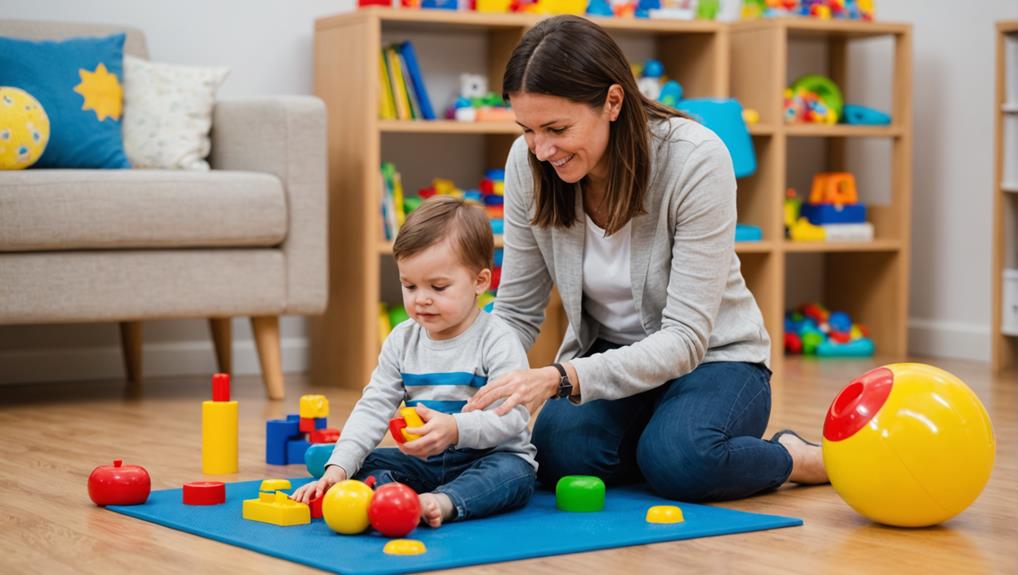
Implementing floortime is a multifaceted process in pediatric occupational therapy. This approach, which involves engaging the child in play-based interactions, has proven beneficial for children with various developmental challenges. This section will elucidate the understanding of the floortime approach, discuss its therapeutic impact, and examine how professionals can effectively implement floortime techniques.
Understanding Floortime Approach
Embracing the Floortime approach requires recognizing it as a child-led, play-based intervention technique within the Developmental, Person-specific, Relationship-based (DIR) model. This original technique promotes emotional and social growth in children with developmental challenges, including autism. The core of DIR/Floortime lies in its emphasis on interactive play and the crucial role of emotional connections, problem-solving, and communication skills development.
The Floortime approach encompasses several fundamental principles that ensure its effectiveness:
- It is child-led, focusing on following the child’s lead and engaging in play that the child finds captivating and enjoyable.
- It facilitates interactive play, allowing the child to lead the activity while the adult follows, adding elements to extend and broaden the interaction.
- Floortime sessions can occur in diverse environments involving parents, therapists, or peers, fostering a sense of belonging and community.
- It targets the development of social and emotional capacities, focusing on building relationships and understanding emotions.
To truly understand and appreciate the Floortime approach, it is vital to explore its practical application and the different facets that make it a powerful tool within pediatric occupational therapy.
Floortime’s Therapeutic Impact
While many therapeutic interventions exist for children with developmental challenges, Floortime’s unique child-led approach profoundly impacts their personal and social growth. This therapeutic impact is achieved by prioritizing the child’s natural interests and encouraging discovery and interaction within their environment.
DIR/Floortime not only supports children in reaching developmental milestones, but it also fosters an intrinsic sense of belonging. By engaging children in enjoyable activities, therapeutic sessions become a nurturing space where children feel understood and accepted. This sense of acceptance is crucial as it fuels the children’s motivation to engage, investigate, and expand their capabilities.
The therapeutic impact of DIR/Floortime extends beyond the therapy sessions. Children who build vital social and personal skills become more equipped to handle daily challenges. This process further promotes necessary growth, enhancing their functional personal developmental capacities (FEDC).
Implementing Floortime Techniques
Adopting floortime techniques in pediatric occupational therapy requires a dynamic, child-led approach centered around interactive play on the floor. This method promotes developmental growth and the achievement of developmental milestones.
A suitable environment is crucial for successfully implementing Floortime techniques encouraging child-led play and personal connections. Therapists must take a back seat, joining children in their world and following their lead while subtly introducing challenges at their developmental level.
Using these techniques, therapists can:
- Foster a playful and interactive environment for the child
- Encourage personal connections and problem-solving skills
- Support children in reaching developmental milestones
- Help children with autism and other developmental challenges build foundational social and personal skills
Floortime Approach Benefits
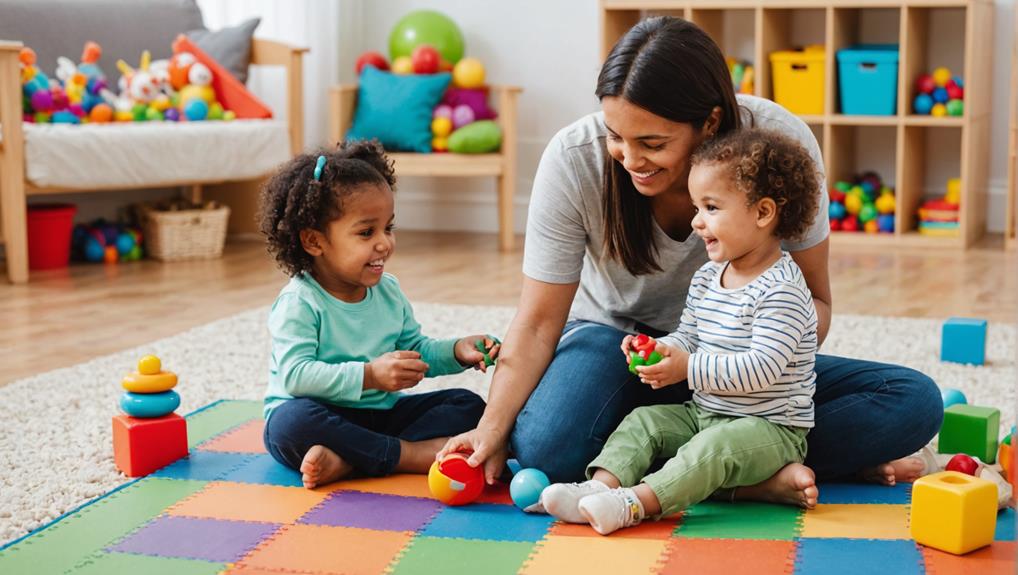
The Floortime approach to pediatric occupational therapy promotes growth through play and engagement and offers significant benefits for children with autism spectrum disorders. This versatile and accessible intervention can be implemented anytime and anywhere, ensuring the child’s comfort and enhancing their participation.
Floortime’s distinct premise of following the child’s lead while simultaneously challenging them fosters heartfelt connections. It supports children in making sense of their emotions, linking them to actions and behaviors. This essential connection helps children climb the ladder of developmental milestones, enhancing their developmental capacities.
Moreover, the Floortime approach promotes intensive skill-building. Children engage in meaningful exchanges with parents and therapists based on their interests, making the learning process enjoyable and less overwhelming. This method advances their developmental path and encourages their autonomy and creative expression.
Autism and Floortime
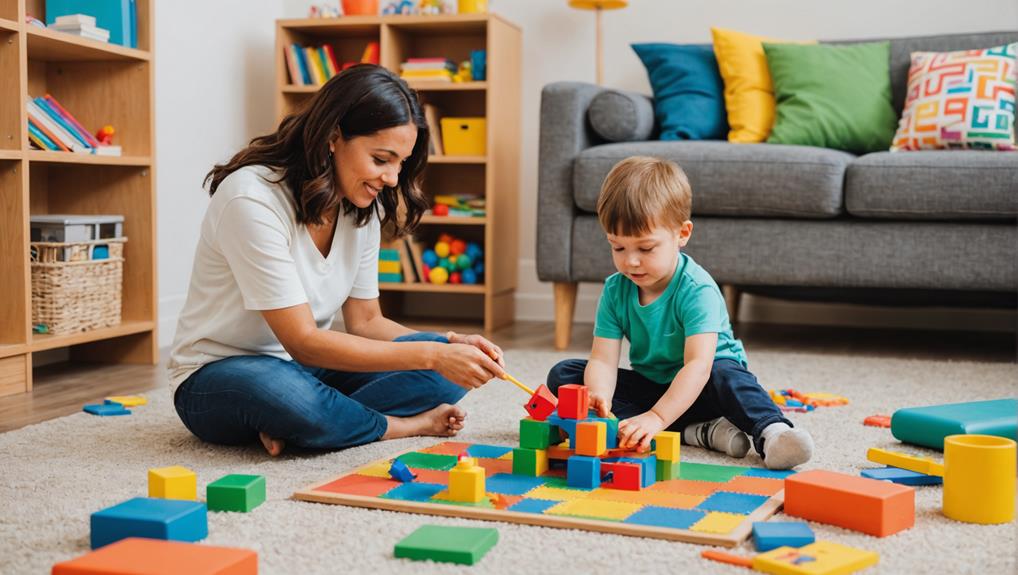
Delving into autism, the Floortime method emerges as a guiding light for therapists, caregivers, and most importantly, the children traveling through the spectrum. This evidence-based approach promotes development by turning playful, engaging interactions into opportunities for growth.
The Floortime model is founded on meeting children where they are developmentally and building on their strengths. It is especially effective for children with autism because it:
- Fosters relationships, enhancing the child’s ability to connect with others
- Promotes self-regulation, helping children manage their responses to sensory stimuli
- Facilitates communication, encouraging both verbal and non-verbal interactions
- Develops problem-solving skills, supporting children to think and act independently
Floortime can be implemented in various settings, from home to therapy sessions and even during daily activities, making it a versatile tool for supporting autistic children. Following the child’s lead and challenging them at their level, the Floortime method enables autistic children to progress through developmental milestones and improve social interactions.
Consultation Opportunities
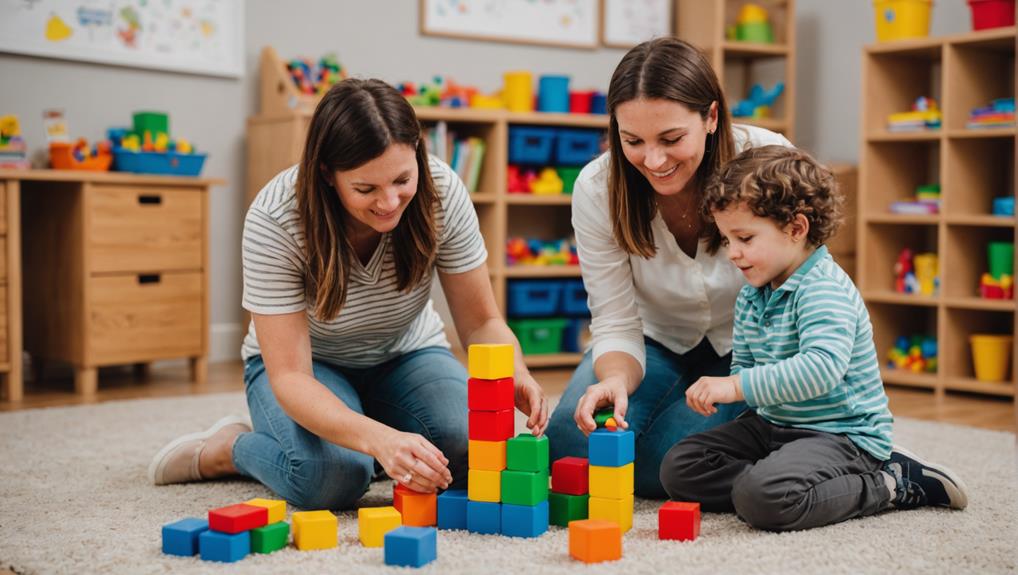
Individuals interested in learning more about the utilization of Floortime in pediatric occupational therapy have access to a wealth of discussion opportunities. These discussions offer crucial information about Floortime and its advantages and serve as a platform to grasp how it can support children with developmental challenges.
Personalized virtual discussions offer a detailed exploration of how Floortime can be applied in pediatric occupational therapy interventions. These sessions provide detailed information on the DIR/Floortime model, guiding participants on efficiently using this therapeutic approach. This tailored attention ensures that each discussion caters to the child’s needs and provides a solid foundation for therapeutic intervention.
Moreover, discussions offer guidance on implementing the DIR Home Program, enabling parents and caregivers to integrate Floortime strategies into their daily routines seamlessly. Therefore, these discussion opportunities are fundamental in pursuing effective DIR/Floortime pediatric occupational therapy.
Child’s Lead and Challenges
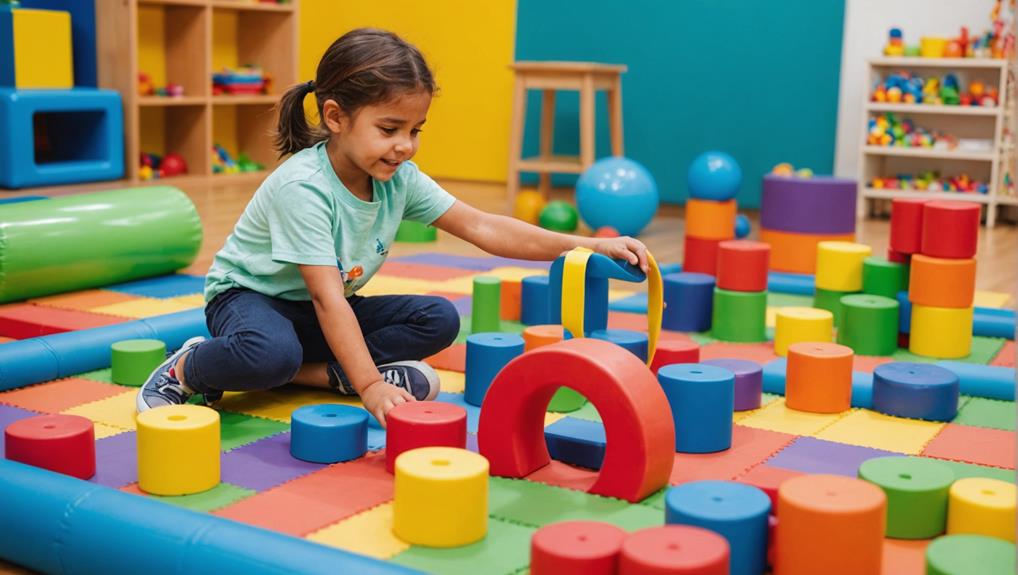
While engaging in DIR/Floortime therapy, following the child’s lead is crucial by tuning into their feelings and interests. This approach fosters a sense of belonging and enriches the child’s emotional world, encouraging active therapy participation.
Within DIR/Floortime, professional insight is combined with a detailed understanding of the child’s perspective. This balance is crucial, as it allows therapists to:
- Tailor interventions to the child’s emotional state and interests
- Challenge the child appropriately, stimulating growth and development
- Develop the child’s six functional, emotional developmental capacities
- Promote meaningful progress by following the child’s lead and providing suitable challenges
Recognizing and following the child’s lead offers a genuine, respectful approach to therapy, nurturing the child’s self-esteem and emotional well-being. By aligning with the child’s interests and emotional state, therapists can introduce challenges that promote growth and development while maintaining engagement and motivation.
Overcoming challenges within a supportive, understanding environment fosters resilience and encourages the child to reach their full potential. Through the DIR/Floortime approach, we can support children in building a solid foundation for their future development.
Resources by Dr. Stanley Greenspan
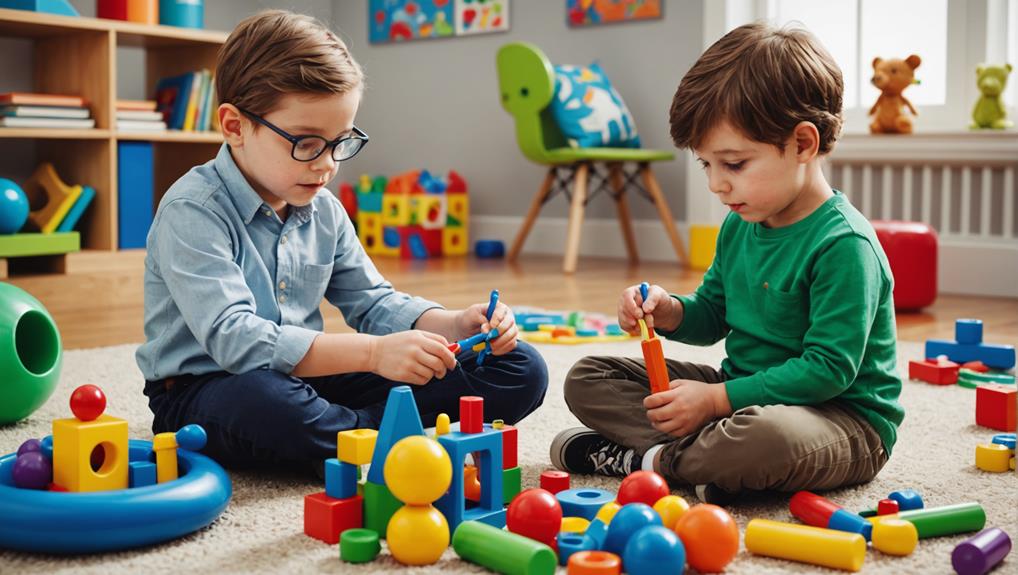
Renowned for his contributions to pediatric occupational therapy, Dr. Stanley Greenspan’s resources provide invaluable insights into applying the Floortime approach. His work elucidates the principles of the Developmental, Personalization-differences, and Relationship-based (DIR) model, which forms the bedrock of this therapeutic technique. Practitioners must grasp these principles to implement DIR/Floortime effectively.
Greenspan’s Floortime Approach
Dr. Stanley Greenspan developed the Floortime approach, significantly contributing to pediatric occupational therapy. This approach focuses on nurturing relational connections through child-led play and interaction, thereby becoming an instrumental tool in managing developmental challenges in children.
The Floortime approach involves:
- Encouraging child-led play emboldens the child, boosting their confidence and independence.
- Building relational connections: The interactive play approach helps cultivate stronger relational bonds between the child and therapist.
- Addressing developmental challenges: Through the child’s play, therapists challenge the child at their developmental level, promoting growth.
- Utilizing Resources and Courses: Dr. Greenspan offers resources and courses to support children experiencing developmental challenges.
The technique has proven effective in pediatric occupational therapy for children with conditions such as autism, sensory processing disorders, speech delays, and attention issues. By following the child’s lead, therapists can engage the child in a manner that suits their developmental level, simultaneously developing their skills and relational connections. Therapists can further enrich their approach with Dr. Greenspan’s resources and courses, ensuring each child receives tailored support.
Understanding DIR Model
Building on the principles of the Floortime approach, Dr. Stanley Greenspan developed the DIR model to foster a thorough understanding of each child’s distinct developmental profile. This model focuses on Developmental aspects, Individual Differences, and Relationship-based components, emphasizing the significance of heartfelt connections in promoting healthy development.
The DIR model is predicated on the belief that every child has a distinct developmental trajectory, with specific differences influencing their interaction with the world. It recognizes the importance of tailoring interventions to suit these unique differences, acknowledging that one-size-fits-all approaches may not be practical.
In the DIR model, relationship-based interventions play a critical role. Fostering meaningful emotional connections between the child, family members, and therapists creates a nurturing environment conducive to the child’s development. This approach encourages engagement in appropriate play environments and promotes communication circles, fostering emotional and intellectual growth.
Incorporating the DIR model in pediatric occupational therapy involves a collaborative effort from speech-language pathologists, OTs, mental health professionals, educators, and families. This integrated approach, grounded in evidence-based research, has been proven effective worldwide, particularly for children with developmental challenges, including those on the autism spectrum.
Core Principles of DIR/Floortime
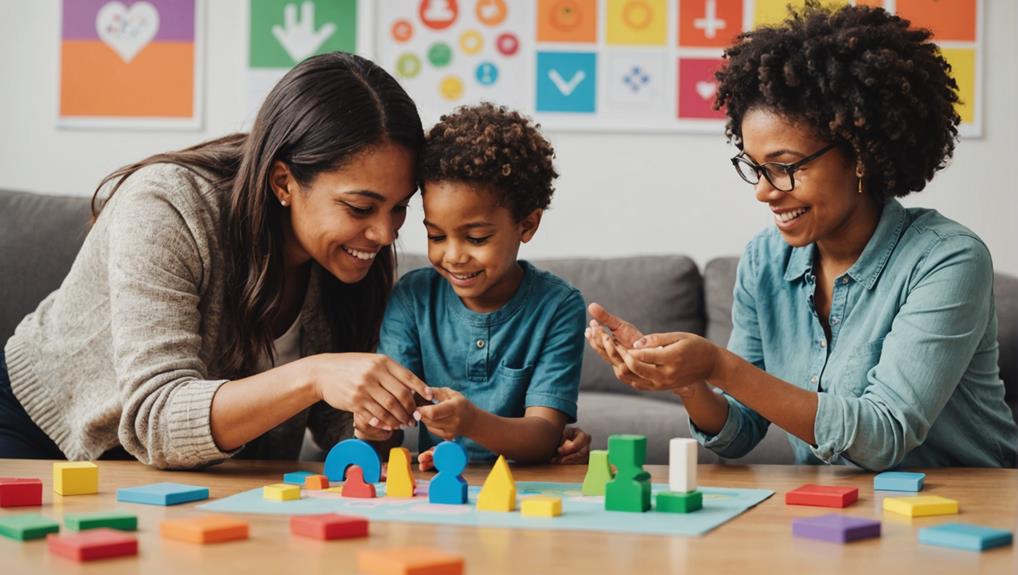
The six core principles of DIR/Floortime form the foundation of this groundbreaking approach, emphasizing the significance of individual differences, developmental stages, and the importance of relationships in child development. The approach captures the essence of child-led play, highlighting the child’s innate curiosity and enthusiasm for exploration.
The core principles are as follows:
- Following the child’s lead: By carefully observing and engaging with children in their play, therapists can gain insights into their interests, strengths, and challenges.
- Challenging the child appropriately: Here, scaffolding techniques are used. The therapist provides enough assistance for the child to accomplish a task, promoting independence and skill development.
- Fostering emotional connections: Emotional interactions are at the core of Floortime. They create meaningful learning experiences and strengthen the bond between the child and the therapist.
- Expanding circles of communication: The therapist consistently encourages back-and-forth communication to promote language development, social interaction, and problem-solving skills.
With these principles in mind, DIR/Floortime offers a holistic approach, addressing the child’s developmental stages and the emotional connections and relationships contributing to their overall development.
Who Can Benefit From DIR/Floortime

Numerous children facing developmental challenges stand to reap significant advantages from DIR/Floortime interventions. Children with Autism Spectrum Disorder (ASD) find considerable value in this approach, as it equips them with the necessary tools to navigate their distinct developmental path. Relationship-based interventions, part of the DIR/floortime approach, offer a potent strategy for enhancing social-emotional development, an essential aspect for these children.
Beyond ASD, DIR/Floortime proves vital for children struggling with sensory processing disorders. Concentrating on sensory-motor integration greatly assists these children in regulating their sensory experiences, promoting a sense of control and comfort within their surroundings.
Children with speech and language delays also benefit from DIR/Floortime. The personalized nature of the approach ensures that interventions are tailored to each child’s specific requirements, fostering communication skills in a way that connects with them.
Furthermore, children dealing with attention/hyperactivity issues such as ADHD find relief and improvement through DIR/Floortime. Multidisciplinary teams often employ this relationship-based approach to support these children in reaching their full potential, significantly enhancing their overall quality of life.
Comparing DIR/Floortime and ABA
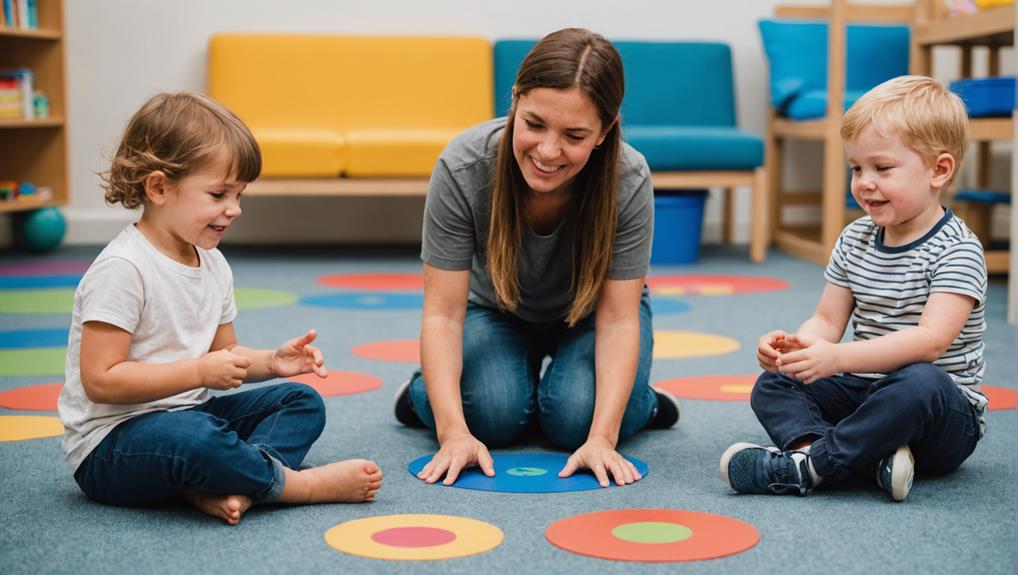
When compared, DIR/Floortime and Applied Behavior Analysis (ABA) are both very effective strategies for enhancing developmental skills in children with Autism Spectrum Disorder. Each offers distinct approaches and benefits, yet the choice between them must consider individual needs, preferences, and the specific characteristics of the child.
- DIR/Floortime focuses on emotional development, relationship-building, and child-led play. This approach encourages spontaneous behavior and fosters personal interests, nurturing a child’s emotional well-being while promoting intellectual and social capacities.
- ABA, on the other hand, emphasizes behavior modification and skill acquisition through structured interventions. It is typically goal-oriented and utilizes a reward system, allowing therapists to track progress measurably.
- The comparison of DIR/Floortime and ABA suggests that an integrated approach can benefit comprehensive support. This approach combines the strengths of both methods and allows for a more tailored plan. Talk to your therapist.
- Implementing DIR/Floortime, ABA, or an integrated therapy approach requires a collaborative, multidisciplinary team. This team typically includes pediatric occupational therapists, educators, and caregivers, all working together to ensure a consistent and unified strategy for the child’s development. Their combined expertise supports comprehensive care, helping to create an environment where the child’s growth and progress are fully supported.
Additional Resources and Services
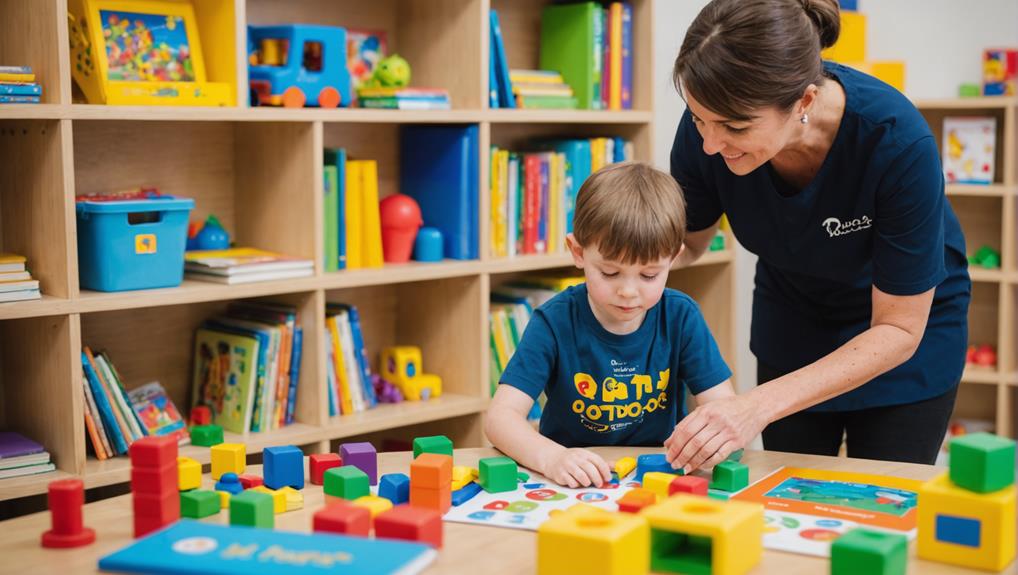
Conclusion
To sum up, DIR/Floortime offers a promising avenue for pediatric occupational therapy. It holistically addresses children’s developmental needs by emphasizing emotional connection, playful interaction, and sensory integration. This approach helps to foster significant improvements in sensory modulation, motor planning, and language development. It is a symbolic bridge, providing a pathway for children with developmental challenges to navigate their world more effectively, enhancing their comprehensive quality of life.
